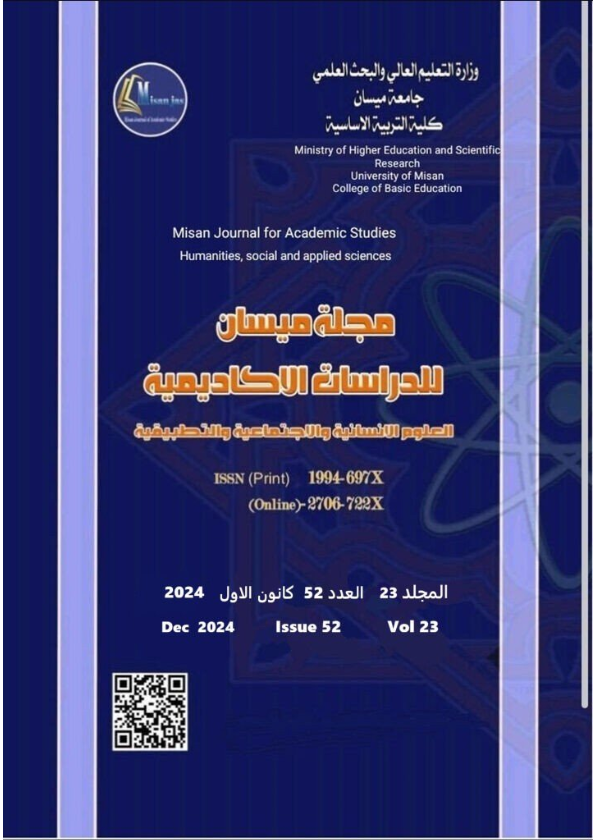Gestural and Facial Expression Feedback in Motivating EFL Learners to Learn Grammar
Abstract
Understanding that very few students appreciate grammar and tend to find it the hardest part of learning a language. The present study examines the importance of using gestural and facial expression feedback in order to motivate English as a Foreign Language learners in grammar lessons. It is commonplace for this research to look at how the use of gestures and facial expressions by teachers encourages learners to get interested in learning grammar. In a an experimental study, 120 EFL learners, fifth grade students from Baghdad primary school during the academic year 2023-2024, were assigned into an experimental and a control group. EFL learners were split into two strata: one where students received only asset verbal feedback and the other group where students received both asset verbal feedback and gestures. These were achieved through pre-and post-assessments, classroom evaluation, and learner motivation assessments through self-reporting. The mentioned results indicate that gestural and facial feedback plays a key role in boosting learners’ motivation and comprehension of grammatical structures as they offer visual and emotional support which in turn enhances the clarity of instruction and provides a better learning atmosphere. These results highlight the need of integrating communication strategies other than just the English language in EFL classrooms for purposes of motivation and enhancing interaction.
Downloads
Copyright (c) 2024 (Humanities, social and applied sciences) Misan Journal of Academic Studies

This work is licensed under a Creative Commons Attribution-NonCommercial-NoDerivatives 4.0 International License.
The copyright is also the copyright of the magazine only.
All articles published in our magazine are subject to license terms
Creative Commons Attribution(CC BY-NC-ND 4.0) This license permits the content to be reproduced, redistributed and reused in whole or in part for any purpose free of charge, without any permission from the author(s), researcher or student.
Works submitted to Maysan Journal of Academic Studies for publication in the journal (CC BY-NC-ND 4.0) license terms. Where available content can be shared, distributed and replicated provided there is no commercial profit and appropriate credit must be given to the original source through sources or citations. It is mandatory to review any material used from other sources including shapes, tables, and images for re-use under the terms of the Creative Commons License (CC BY-NC-ND 4.0).Provided that there is no modification to the original content



